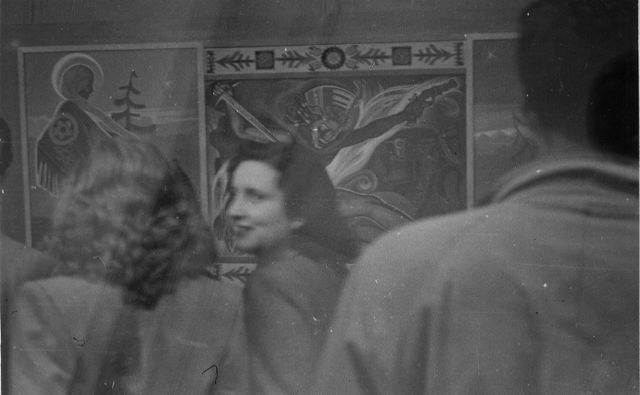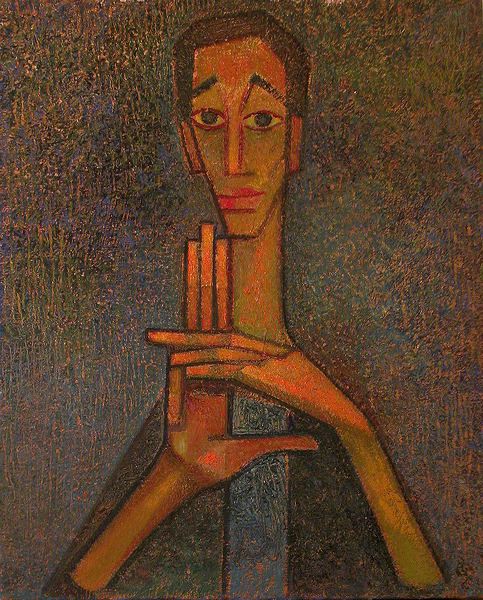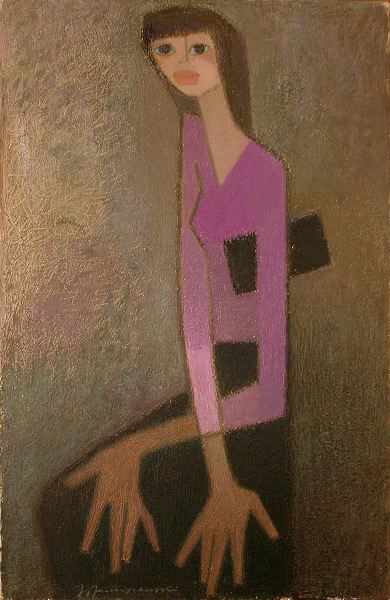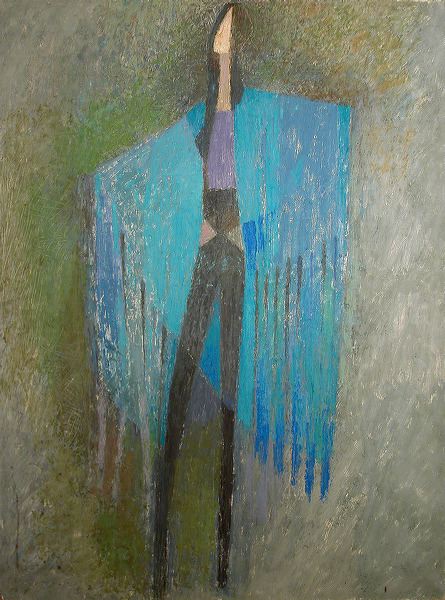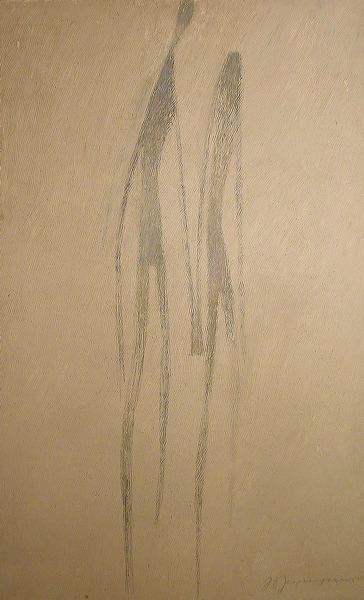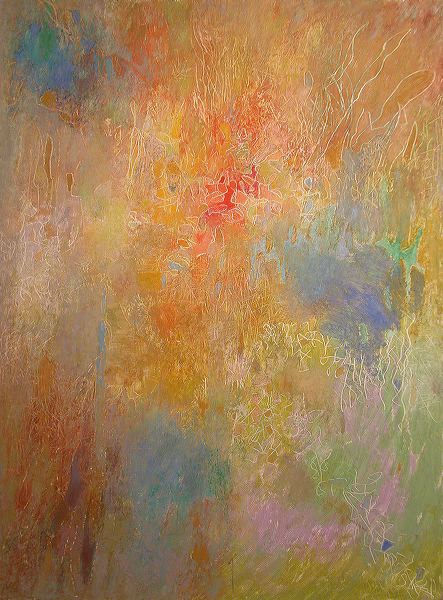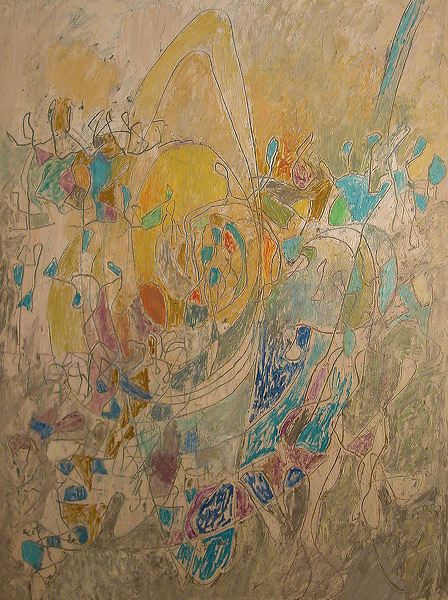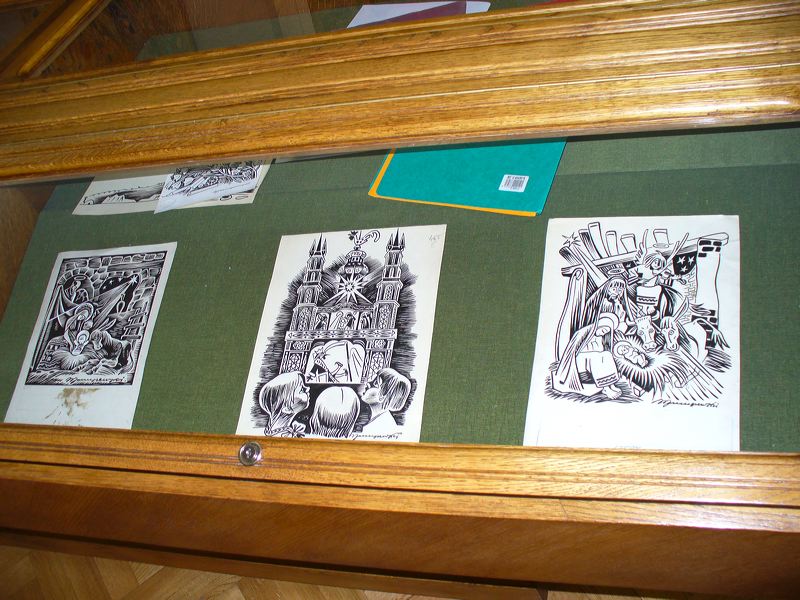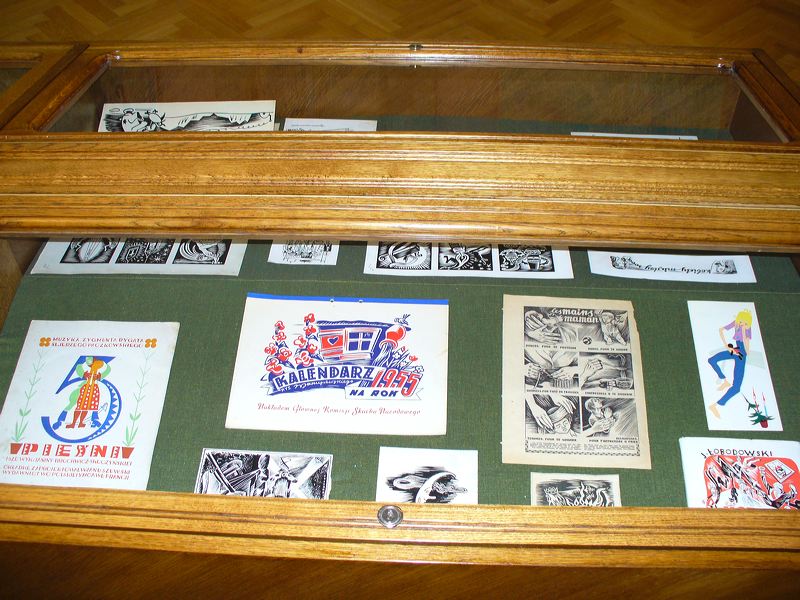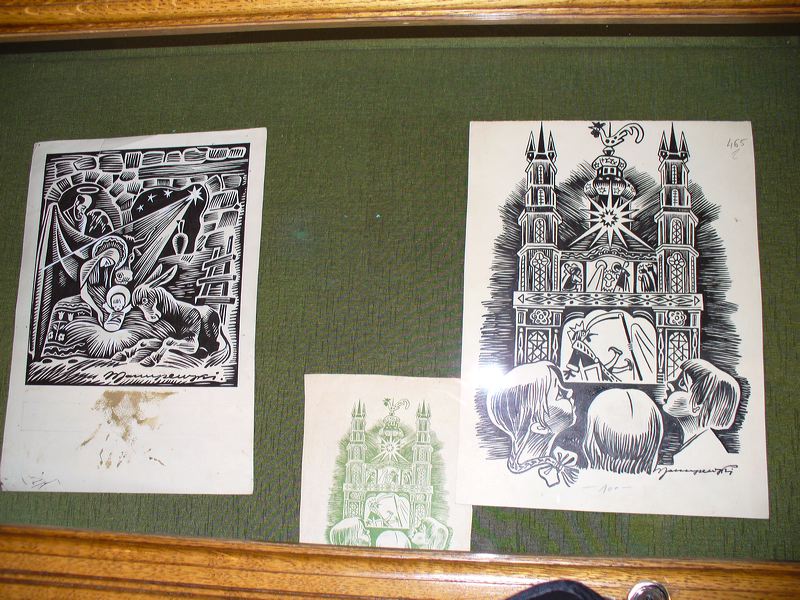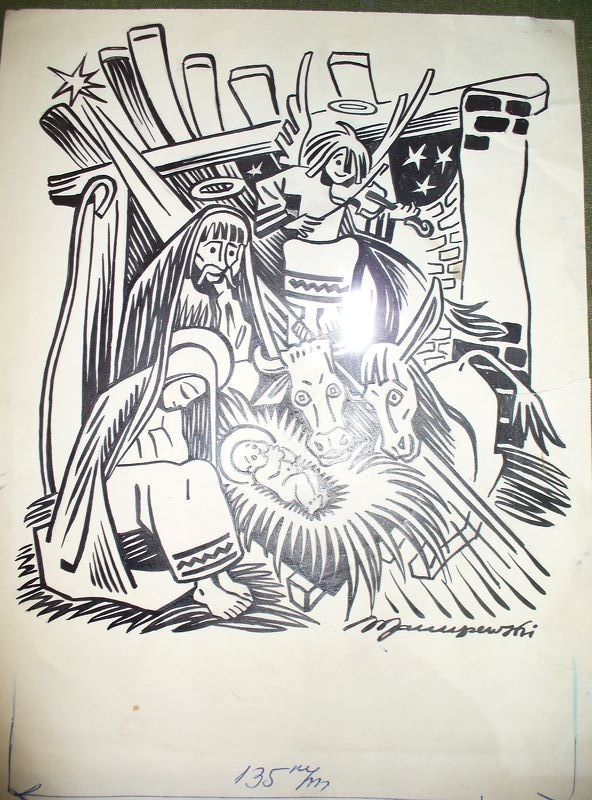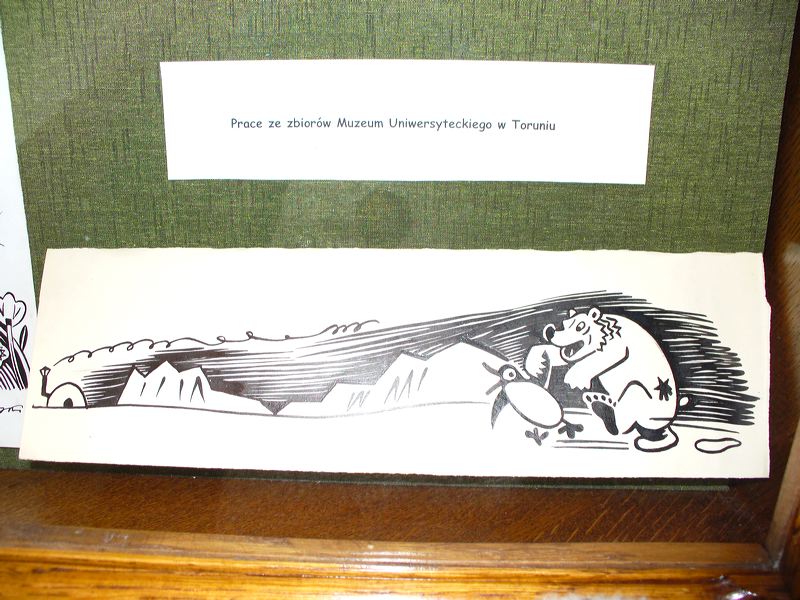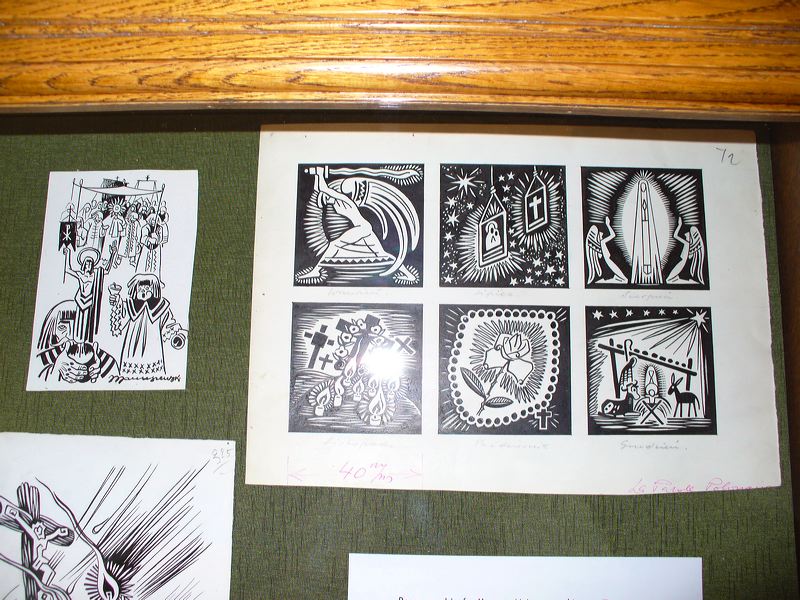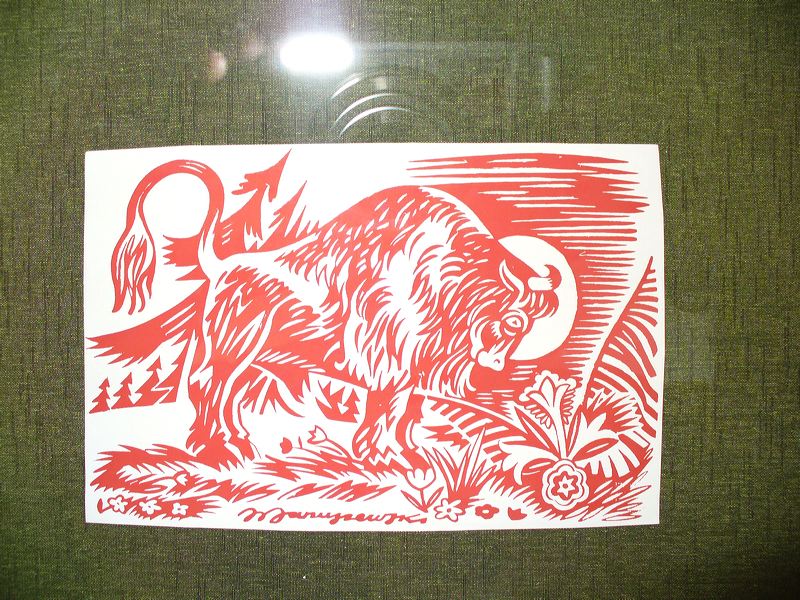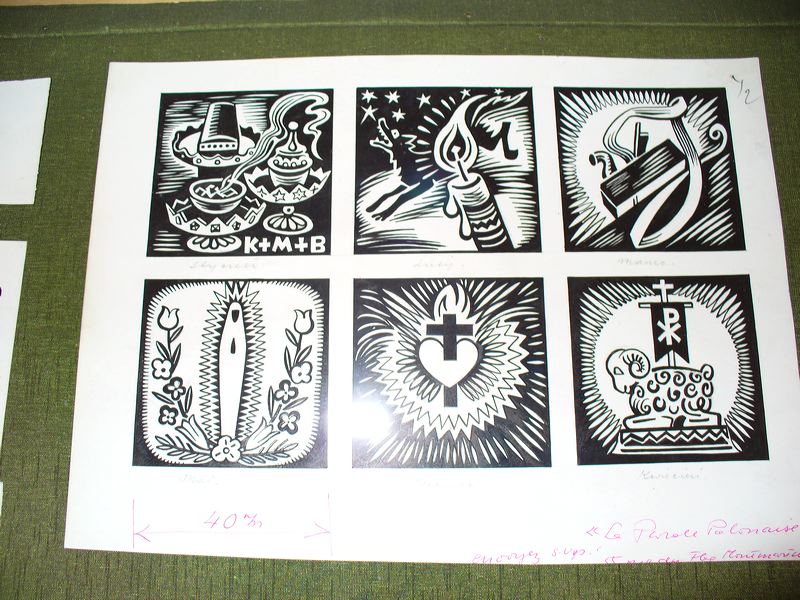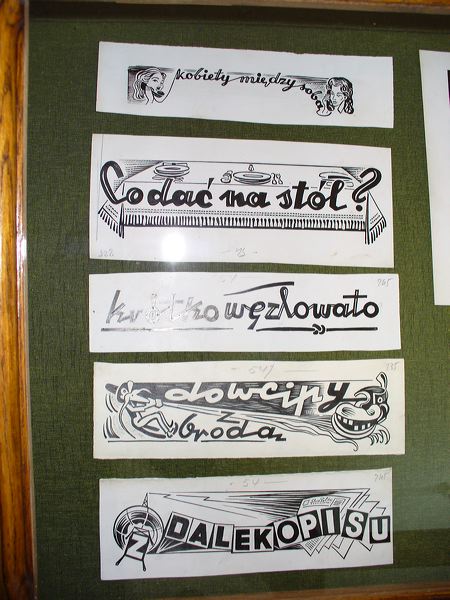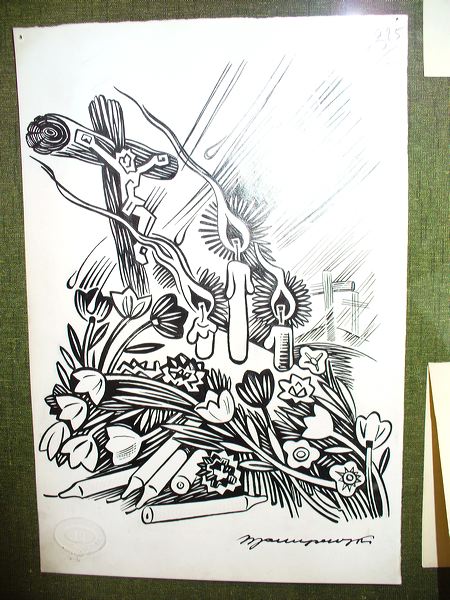Witold Januszewski and his work
Although Witold Januszewski’s work, as known to date, is relatively limited, an analysis of it reveals the breadth of his artistic possibilities and the ease with which he could move from the philosophical questions addressed in his oil compositions to the lightness of his illustrations.
The best-known works today date from the 1960s to the 1980s, his final period of creativity. Only one drawing depicting St. John’s Cathedral in Warsaw has survived from his youth, and we have only a few illustrations from the war period and his stays in internment camps. Even the works created during the fruitful Spanish period have disappeared or are impossible to locate. Therefore, it seems important to devote a little more attention to them.
Artistic Beginnings in Spain 1943-1947: The Figurative Period
The First Barcelona Exhibition
Based on the 1945 Barcelona catalogue, Januszewski designed this first exhibition around Yanosik and his legend. As the author of the preface, Luis Monreal y Tejada, rightly points out, this Polish mountain hero, with all the strength and vigor of his youth, is the very embodiment of the idea of freedom in this dramatic period of the end of the war, exile, an uncertain future, and political changes in his native country. The triptych depicting, in the center, the Tatra brigand leader, full of life and joy, in a somersault over a fire, forms the focal point of the exhibition.
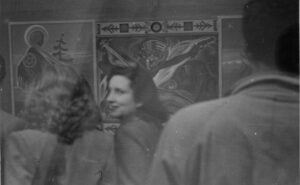
A Polish Theme – Nostalgia for the Homeland
Januszewski’s fascination with the character of Yanosik likely stems from the poetry collection by Julian Dobrowolski-Szynalik, which he illustrated in France in 1942. In addition to scenes of the occupation, his illustrations specifically depicted this legendary figure.
Other works presented in 1945 addressed diverse subjects, ranging fromclassical repertoire borrowed from the great masters, such as the Annunciation, the Virgin and Child, or the Adoration of the Shepherds, to current topics, such as Warsaw – 1944, as well as portraits and landscapes.
Januszewski did not hesitate to emphasize his Polish origins, both in the catalog, where he referred tohimself as a “pintor polaco,” and in the style and subject matter of his works. Universal themes were stylized in the manner of Polish folklore. The exhibition was a revelation for the Barcelona public, who had rarely had the opportunity to see Polish art, and was a resounding success. Critics highlighted the artist’s taste for beauty and decoration. Despite the poor quality of the images reproduced in the catalog, one can appreciate the perfection of a linear drawing on which the composition is based. An elegant, sinuous, serpentine line, suggesting movement, delineates simplified forms filled with flat colors. Spanish critics saw Byzantine stylistic influences. For us, these are rather reminiscences of the linear, decorative style of the “Young Poland” movement, which nourished the young artist.
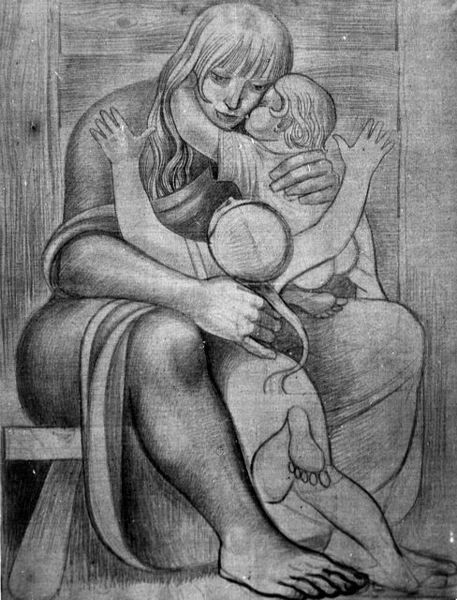
The works exhibited in 1947 at the Franquesa Gallery constitute a collection composed of paintings with varied themes and decorative cartoons depicting Polish dances, including the polka, the kujawiak, and the trojak. Here, the artist undoubtedly recalls the works of Zofia Stryjenska, so popular in pre-war Poland, inspired by Polish folk costumes and dances. Januszewski draws the same motifs in an even more dynamic, lively style, emphasizing the dancers’ momentum. Some of the surviving preparatory drawings show a precise, strong, and deliberate line defining the forms. The artist fills the entire surface, without worrying about sometimes arbitrarily cutting out shapes. He demonstrates a heightened interest in decorative motifs. In the final works, he engraves shapes on cardboard with a precise line, which he then fills with uniform color. Thus, he achieves simplified, synthetic forms.
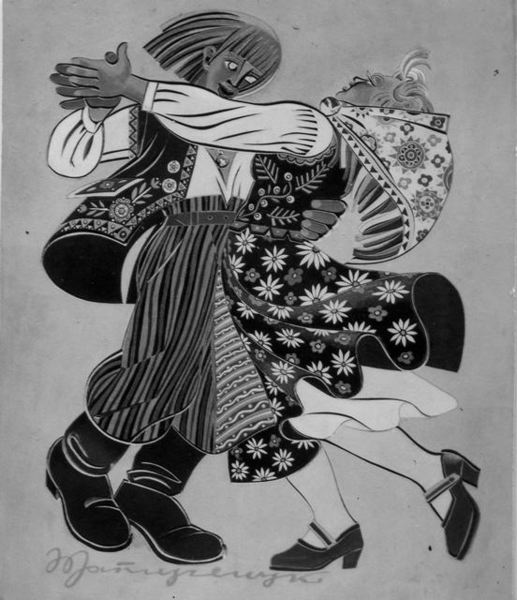
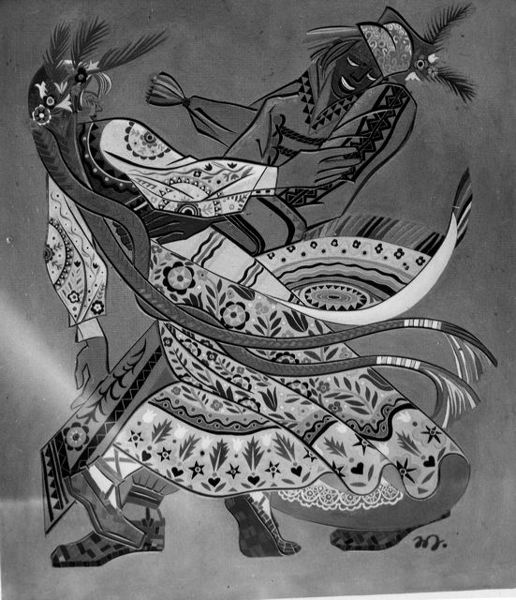


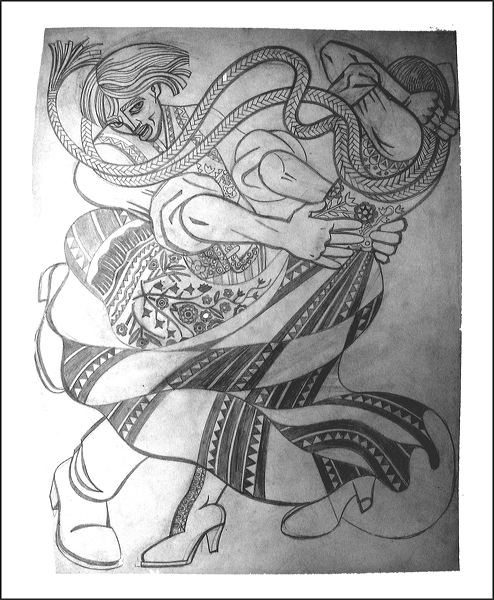
Reminiscences of War and Memories of the Homeland
We are familiar with certain paintings from the Spanish period through black and white photographs. The depict reminiscences of war and memories of the homeland : The Exile, The Martyrs of Warsaw, The Month of August in Poland. However, local Catalan motifs, such as views of the Costa Brava, beaches, almond trees in bloom, flamenco, and bullfighting, become increasingly prominent. A kind of calm and concentration can be observed, as if the artist had accepted his condition and found his own expression. For Spanish critics, this change is linked to his contact with contemporary Spanish painting and the light and colors specific to this hospitable land.
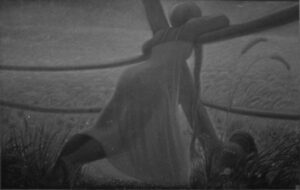
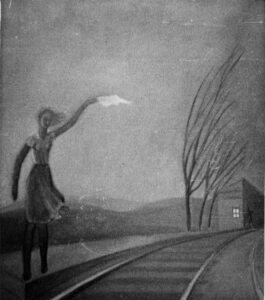
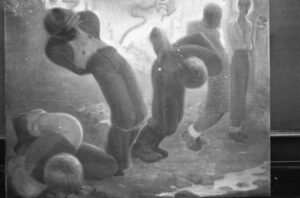
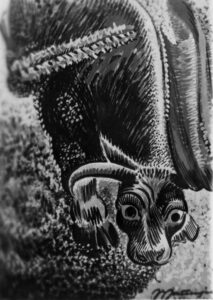
The Parisian Years 1947-1960: Continuation of the Figurative Period
After moving to Paris in 1947, Januszewski continued to paint in the figurative style. He employed a strong, simplified style, with a linear black outline, filled with flat colors. In 1955, a stay in Provence inspired a series of landscapes with rich, warm, nuanced colors, executed in a more realistic style close to the pre-war School of Paris. But this was only a blip, and he quickly abandoned this path. Other works from the 1950s foreshadowed the abstract style. The artist tended toward the simplification of forms through geometrization, atrophy, and deformation, as well as a limited color range dominated by cool harmonies in blue-gray tones. Januszewski experiments with different techniques, loading the colors with various substances.
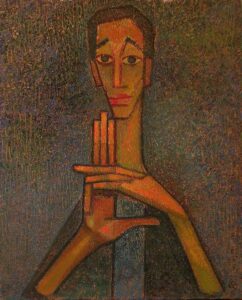
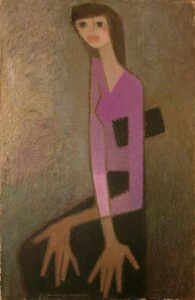
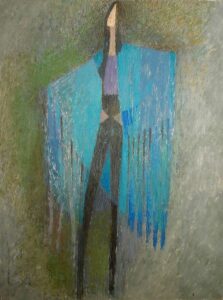
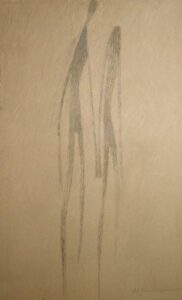
The Mature Period
- Lyrical Abstraction of the 1960s–1981
At the end of his career, he practiced abstract painting in its lyrical form, based on an interplay of irregular colored patches. The result is beautiful and sophisticated harmonies. Here again, a range of cool colors predominates. The artist solves on canvas the problem of the relationships between shades of similar colors. The surface of the painting, matte and full of roughness, is an important element for him. It is frequently enlivened by parallel vertical grooves, as if the artist had “raked” the paint with an unidentified tool.
Sometimes, he engraves lines into the paint with the handle of the brush, forming a discreet, autonomous design that enriches the colors of composition with a linear element, lending the work another interpretation parallel to the chromatic one. The drawing, although abstract in appearance, sometimes brings recognizable forms to the surface. This system of irregular lines likely originates from geomancy, one of the oldest divinatory arts, in which the future is deciphered from signs drawn in the earth.
It is no coincidence that Januszewski titled “Geomancy in Color” a piece that is exceptional in his oeuvre due to its warm yellow-orange-red color range, reminiscent of the earth’s depths. Generally speaking, titles are important to the artist and reflect his broad and diverse interests, informed by extensive and varied reading on fields as diverse as the universe, mythologies, gnosis, Far Eastern wisdom, and nature and its mysteries.
Thus, Januszewski’s painting is an abstract, colorful vision of the world that aims to move the viewer, inviting them to reflect and meditate on cosmogonic and philosophical questions.
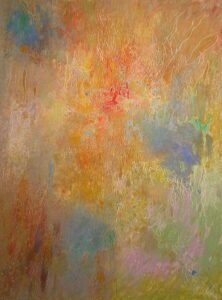
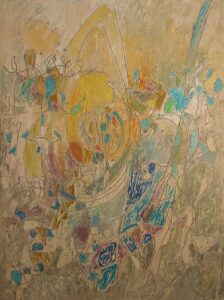
- Graphic Research
The artist tries his hand at different techniques, such as pencil, colored inks, gouache, oil, or mixed media. He also creates collages for decorations, using cut-out paper shapes placed directly on the wall, which serves as a background. He is also interested in sculpture, even minor, made for example from cut-out colored paper, from which he shapes forms that he stages. Sometimes, he photographs them to use them in illustrations. He also makes art objects, notably jewelry in various materials, such as wood, stones, or metals, which he sometimes assembles.
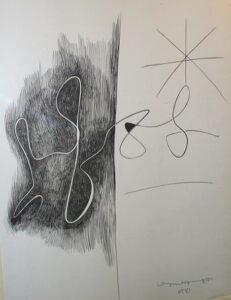
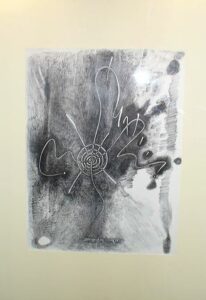
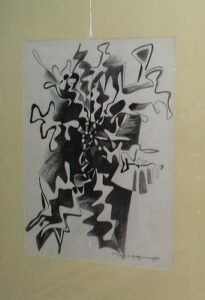
- A Wide Variety of Techniques
The artist experiments with different techniques, such as pencil, colored inks, gouache, oil, and mixed media. He also creates collages for decorations, using cut-out paper shapes placed directly on the wall, which serves as a backdrop. He is also interested in sculpture, even minor, made, for example, from cut-out colored paper, which he shapes into forms and then displays. He sometimes photographs them for illustrations. He also creates art objects, notably jewelry made from various materials, such as wood, stones, or metals, which he sometimes assembles.
- Illustrator Work
Alongside painting, the artist devoted himself to illustration, particularly in the 1950s. His calendars and postcards are designed in a very distinctive, easily recognizable style. He often illustrates children’s books. He uses a legible symbol that allows for immediate identification of the scene depicted, and often aims for comic effects. In his drawings, the artist employs strong, deliberate lines and contrasts of black and white, without any grayscale. He is undoubtedly inspired by Polish folk art, particularly the tradition of woodcuts, likely seen through the works of Wladyslaw Skoczylas, which were very popular and appreciated in Poland during the interwar period.
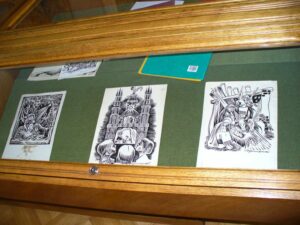
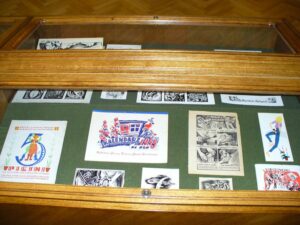
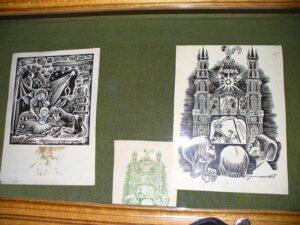
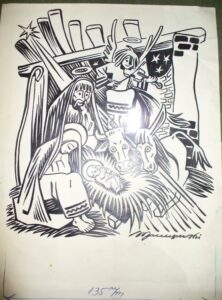
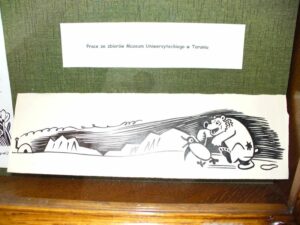
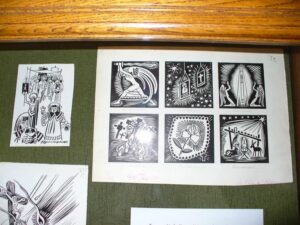

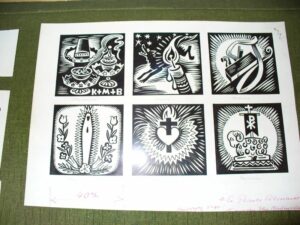
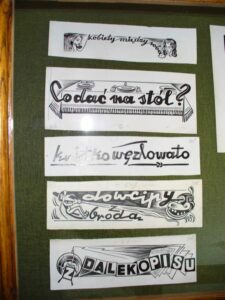
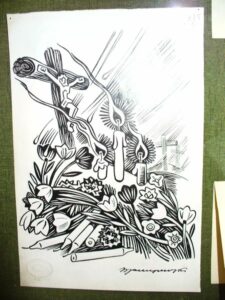
| Ewa Bobrowska-Jakubowska, Art historian Exhibition curator in Poland 2007 – 2010 |

